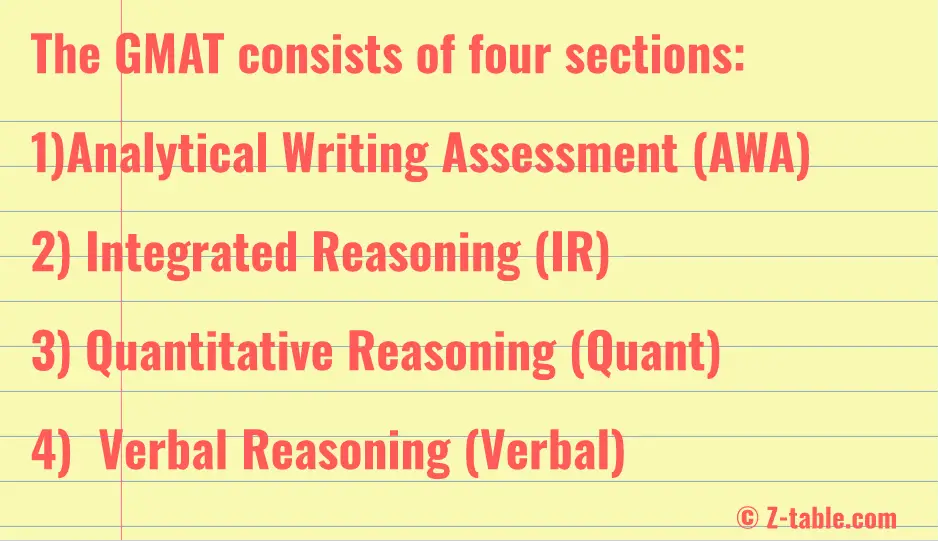|
The Graduate Management Admission Test, more commonly known as the GMAT, is a critical component of the application process for many top business schools worldwide. But the way in which the GMAT score is calculated can be somewhat complex and often misunderstood. In this article, we'll break down the formula for calculating your GMAT score and provide an overview of how the scoring system works. If after reading this post, you want to try out a GMAT mock text try to answer these GMAT practice questions. Overview of the GMATThe GMAT consists of four sections:
The Scoring BreakdownLet's now look at each of the GMAT sections and how their scores are calculated. 1. Analytical Writing Assessment (AWA) In this section, you are asked to write an essay. This essay is then scored on a scale of 0 to 6, in half-point increments. Your essay is scored twice: once by a computerized system and once by a human grader. The average of these two scores is your final AWA score. 2. Integrated Reasoning (IR) In the IR section, you're required to interpret and analyze information presented in various formats. Your IR score ranges from 1 to 8, in one-point increments. This score is based solely on the number of questions you answer correctly; there's no penalty for wrong answers. 3. Quantitative and Verbal Reasoning Both the Quant and Verbal sections are computer-adaptive, meaning the difficulty of questions adjusts based on your performance. In other words, the better you perform, the more challenging the questions become. Your scores for these sections range from 6 to 51. The Total GMAT ScoreThe total GMAT score is a scaled combination of the Quant and Verbal scores and ranges from 200 to 800. This score does not include the AWA and IR sections. About two-thirds of test-takers score between 400 and 600. The Quant and Verbal scores are scaled to account for differences in overall difficulty from one test to another. Therefore, the raw score (the number of questions answered correctly) isn't enough to determine your scaled score. The scaled scores for the Quant and Verbal sections are then combined and converted into a total score. This score is presented along with a percentile ranking, which tells you what percentage of test takers you performed better than. For example, a 700 GMAT score would mean you performed better than 88% of test-takers. This percentile ranking is crucial for business schools as it gives them a clear idea of where you stand among other candidates. Check out our mock GMAT 10 question test to get a better sense of how GMAT tests are structured. Final ThoughtsUnderstanding how the GMAT score is calculated can help you build an effective study strategy. Remember, each section requires different skills, and therefore, you should tailor your preparation accordingly. Also, while your total GMAT score is critical, don't underestimate the importance of the AWA and IR sections. Many schools use these scores to assess your analytical writing and integrated reasoning skills, which are essential for success in the business world.
Overall, achieving a high GMAT score is about more than just knowing the right answers. It's about demonstrating a range of skills and capabilities that business schools value. The more you understand about the test and its scoring system, the better equipped you'll be to excel. Take our GMAT practice questions with explanations to test your knowledge.
0 Comments
Leave a Reply. |
Z Score Table BlogEverything about normal distribution and Z scores Archives
January 2024
Categories |

 RSS Feed
RSS Feed